Tribe Platycercini Scientific name Lathamus discolor Phylum Chordata Order Parrot | Superfamily Psittacoidea Subfamily Platycercinae Genus LathamusLesson, 1830 Higher classification Lathamus Rank Species | |
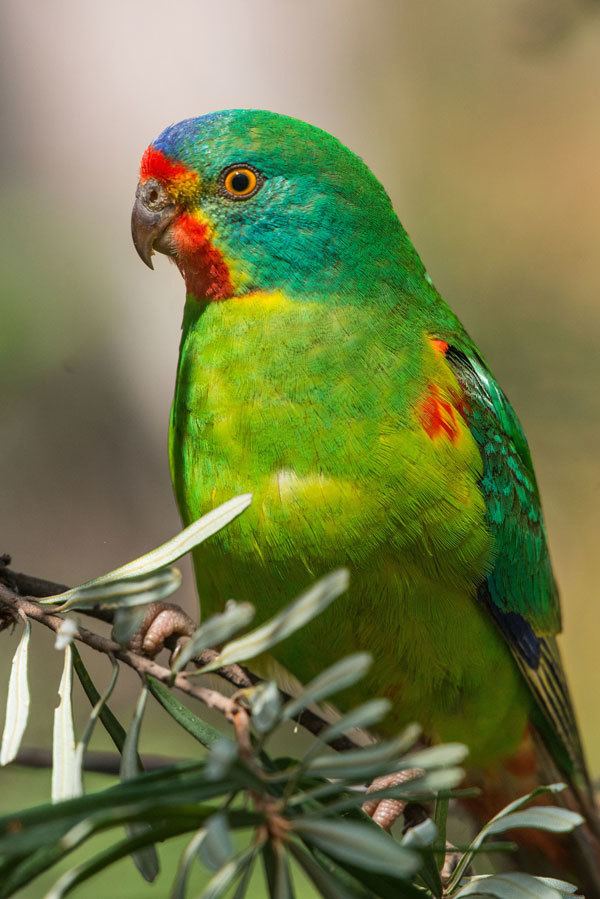 | ||
Similar Parrot, Polytelis, Charmosyna, Princess parrot, Brown lory | ||
Swift parrots update
The swift parrot (Lathamus discolor) breeds in Tasmania and migrates north to south eastern Australia from Griffith-Warialda in New South Wales and west to Adelaide in the winter. It is related to the rosellas, with the feeding habits of a lorikeet. It is the only member in the genus Lathamus.
Contents
- Swift parrots update
- Tasmania s swift parrot set to follow the dodo
- Taxonomy
- Description
- Breeding and social habits
- Distribution
- Important Bird Areas
- Habitat
- Diet
- Conservation status
- Australia
- State of Victoria Australia
- References
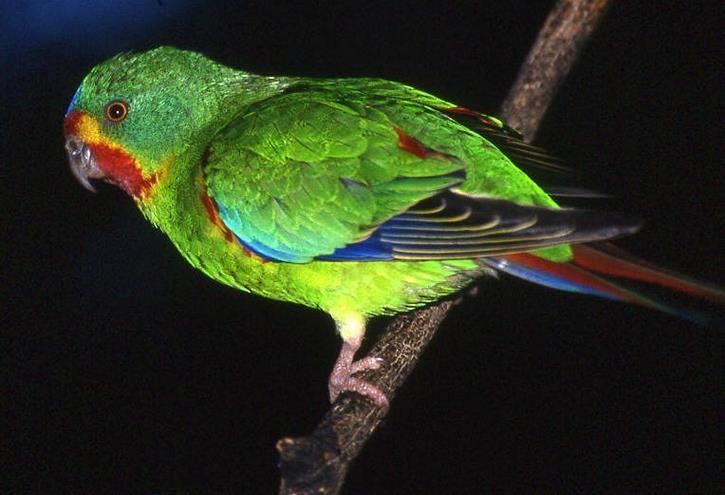
There was estimated to be fewer than 2000 mature individuals remaining in the wild as of 2011. In 2014, researchers from the Australian National University modelled that the species may face extinction by 2031 due to predation and loss of habitat, the International Union for Conservation of Nature (IUCN) upgraded the status of the swift parrot from endangered to critically endangered in October 2015 based on results from the study.
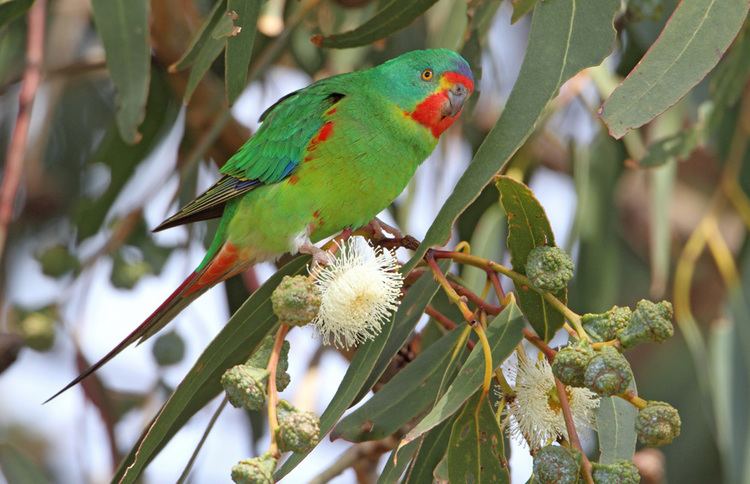
Tasmania s swift parrot set to follow the dodo
Taxonomy
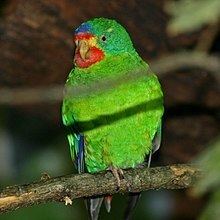
The surgeon John White described the swift parrot in 1790 as the red-shouldered paroquet (Psittacus discolor). It was placed in the genus Lathamus by René Primevère Lesson in 1830.
Description
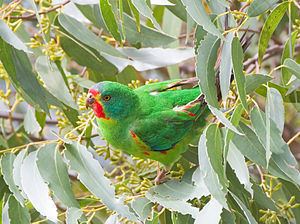
The swift parrot is about 25 cm (10 in) long and has long pointed wings and long tapering tail feathers. It is mainly green with bluish crown and red on the face above and below the beak. The adult female is slightly duller, and the juvenile has a dark brown iris and a pale orange bill. The forehead to throat is crimson and there is also crimson patch at the top, edge of the wing. The female parrots are slightly duller than the males and with a creamy underwing bar. They are noisy, always active and showy, and are very fast with their direct flight. This parrots/species is also known as the Red-faced or Red-shouldered Parrot.
Breeding and social habits
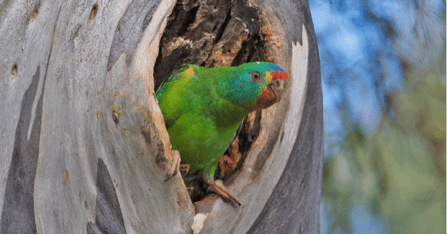
The species breeds in Tasmania from September to December. It nests in tree hollows about 6–20 metres from ground level and usually with other breeding pairs. Eggs are white with 3–5 per clutch. Voice is of high pitched tinking chattering, piping pee-pit, pee-pit. They only breed from September to March.
Distribution
The swift parrot migrates across Bass Strait between Tasmania and the mainland of Australia. They arrive in Tasmania during September and return to south-eastern Australia during March and April. They can be found as far north as south-eastern Queensland and as far west as Adelaide in South Australia, although recent sightings have been restricted to the south-eastern part of the state.
Important Bird Areas
BirdLife International has identified the following sites as being important for swift parrots:
Habitat
Usually inhabiting: forests, woodlands, agricultural land and plantations, and also in urban areas.
Diet
Seeds and grains, green vegetation, fruit, nectar and pollen, insects, grubs and larvae.
The presence of the winter-flowering golden wattle (Acacia pycnantha) is positively correlated with numbers of swift parrots overwintering in box–ironbark forest in central Victoria, while the presence of flowering eucalypts has no correlation.
Conservation status
It is thought that only 1000 pairs remain in the wild. Habitat destruction and loss of old trees with nesting hollows are critical factors in its decline. Sugar gliders are the major predator of nesting parrots in mainland Tasmania, accounting for 85% of kills, but are absent from Bruny and Maria Islands.
Australia
Swift parrots are listed as endangered on the Australian Environment Protection and Biodiversity Conservation Act 1999.
